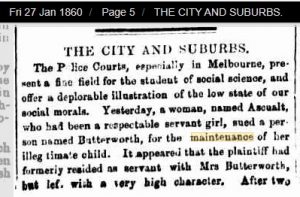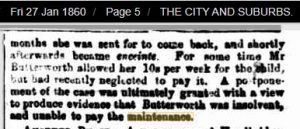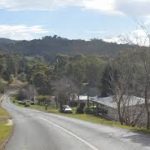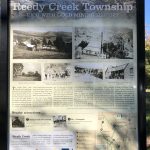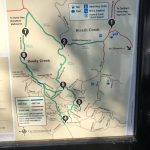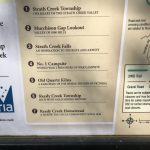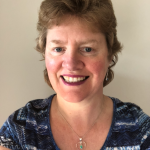Asenath Hall Jennings was born in Madron, Penzance, Cornwall in 1835. Asenath was the daughter of Thomas Barnicoat Jennings (1803-1882) and Sarah ‘Sally’ Hall (1805-1849). Thomas was a cordwainer (Shoemaker) in Madron.
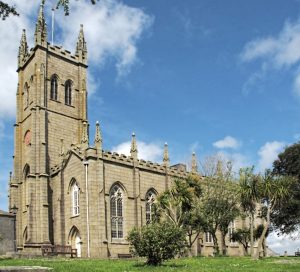
St Mary the Virgin, Penzance, Cornwall
She was baptised on 24 June 1835 in St Marys, Penzance. Sometimes her name is written/pronounced Aseenath, sometimes Selina.
They had six children – Thomas (1825-1891), Sarah (1827-1908), William (1829-1829), Asenath Hall (1831-1831), Selina / Asenath Hall (1835-1912) and William James (1835-1836).
Thomas Jennings and Sarah Hall were married by banns at Madron on 5 July 1824. Witnesses to the marriage were Asenath Pascoe and Tobias Read.
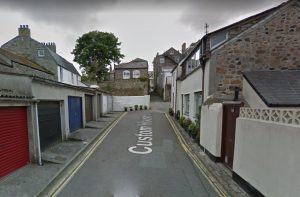
Custom House Lane, Penzance
In the 1841 census of Madron, the family are living in Custom House Lane, off new Street. They are only a couple of blocks from Penzance Harbour and St Mary’s parish church. They have lost three children as babies (William, Asenath no 1 and William).
Father Thomas is a shoemaker aged 35 with wife Sally (Sarah) aged 30, and children Thomas 15 (mason’s apprentice), Sarah 14, and Selena (Asenath) aged 6.
Asenath (number 2) was probably born deaf, as by the age of nine years of age she is a pupil at the Deaf and Dumb Institute, 2 Park Row, Bristol, 178 miles away from Penzance.
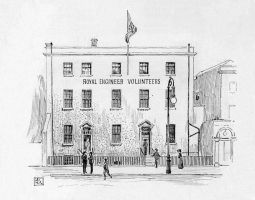
Institution for the Deaf and Dumb, 3 Park Row Bristol
In 1847 aged 12, Asenath is boarding at the Institute which was a Christian charitable organisation set up to educate boarders and day pupils who were deaf.
It was founded in 1840. In the newspaper the Bristol Mercury on 6 May 1847, Asenath Jennings is mentioned along with other children as being in the advanced class.
The newspaper reports that on a visitors day, the students were examined in geography, drew distinctions in mathematical shapes, distinguished between different types of money, and answered questions in the room from people on some of the leading events narrated in the bible.
The audience was apparently “most gratified with what they had seen and animated by the wish to do all in their power to further the welfare of the institution”. The institution was open to visitors every Tuesday.
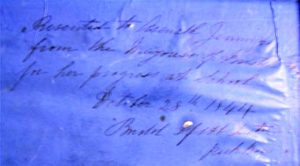
inscription on box lid of Asenath Jennings
When Asenath was nine years of age she was presented with a special box, which was inscribed “presented to Asenath Jennings, from the Mayoress of Bristol Mrs King, for her progress at school”. Dated October 28th 1844.
This box is held by a descendant in Melbourne today.
In 1851 Asenath appears in the census records for the school at 2 Lower Park Row, Bristol, with many other pupils. It states she is a 17 year old pupil born in Penzance. Emma Martin is the 38 year old Matron of the school. The children come from all over England and Wales and there are 25 children registered as pupils.
Asenath appeared in the paper once again at the age of 17, when she wrote a letter to the editor of the Bristol Times in October 1852, thanking them for their kindness in having given the children free admission to see a European diorama.
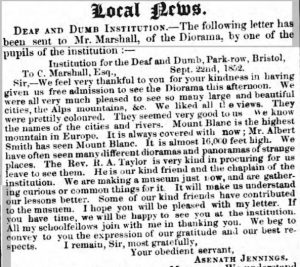
Bristol Times Oct 1852
She thanks her schools chaplain Rev Taylor and all the kind friends that have contributed to making a new museum at their school.
The school building had previously been a two story house, but a third floor was added for the boys’ dormitory.
Girls at the school slept on the first floor above the school room, which was made by knocking through the two sitting rooms of the original house.
Meanwhile back in Penzance, Asenath’s mother Sarah (Sally) had died in May 1849. It appears Thomas then moved around the corner to New Street and in the 1851 census widower Thomas is living with the Beare family (father George is a baker). But where are his three surviving children?
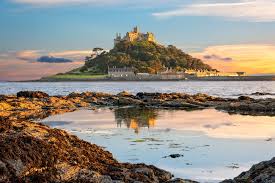
Penzance Cornwall looking out to St Michael’s Mount
Thomas has married and has a family of his own. Sarah aged 23, is living in nearby Queen Street, serving as a general servant with the Hare family, and Asenath is in Bristol.
Two years later at the age of 19 Asenath and her family – father Thomas aged 50, Asenath and her sister Sarah aged 28 leave Cornwall, and journey to London where they will board a passenger ship and immigrate to Melbourne, Australia. The ship “Barrackpore” arrives in Port Phillip Bay in March 1854.
The “Barrackpore” was a wooden sailing ship, built in 1850 and was wrecked in 1855 on the island of Marmora in a gale. It was laden with hay for the French army of the Crimea.

Port Phillip Bay, Melbourne
Asenath’s brother Thomas, wife Sarah and baby son Thomas junior had also immigrated to Australia five years previously in January 1849 aboard the “Lysander”.
Thomas and Sarah settled in Melbourne and had twelve children.
Sadly it appears their brother Thomas did not treat his two daughters well. The Argus newspaper of 7 September 1854 reports that Thomas was charged with assault on his two ‘deaf and dumb’ sisters in his protection. He was discharged after claiming he had not ill used his sisters, but merely attempted to keep them out of the clutches of certain disreputable characters living in the neighbourhood.
Perhaps this was true, because poor Asenath seems to have been a terrible judge of the characters of men that came into her life, or perhaps she was just taken advantage of.
In 1856 in Melbourne she gave birth to a daughter (father unknown) whom she named Mary Ann Jennings and then three years later in 1859 she gave birth to another illegimate child, naming him Joseph Frank Butterworth Jennings.
On 27 January 1860, she appeared in the City of Melbourne Police Court, asking for maintenance for her illegitimate child from Mr Joseph Butterworth.
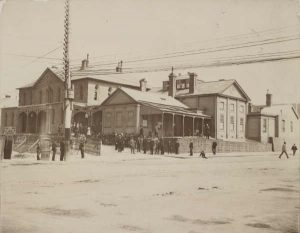
Old Melbourne Police Court
Joseph was owner of the Exchange Hotel in Swanston Street, Melbourne (described as currently insolvent) and on 7 February 1860 was in court, defending his actions on not giving change to a customer Frederick Fitt, for a drink.
When he complained Mr Butterworth assaulted him, but then his wife Mrs Butterworth threw her husband out of the hotel, and several people came forward and said he then assaulted his wife. He was fined and ordered to pay the defendant 3 pounds.
The newspaper stated that Asenath Jennings a deaf and dumb girl, with a child in her arms, summoned Joseph Butterworth landlord of the Exchange Hotel for the maintenance of his illegitimate child. She stated that she had resided with the family as a servant girl and had lately left with a high character reference from Mrs Butterworth.
For some time Mr Butterworth had given her 10s per week for the child but recently had neglected to pay it due to his supposed insolvency. The case was postponed until he could produce evidence of his insolvency.
- The Age newspaper
- 1860
It appears no help was forthcoming and both young children were placed in a Government institution on 23 June 1860, stating parents unknown, on 23 June 1860 (Immigrants Home Melbourne). Mary Ann was 4 and her brother Joseph F was aged 1.
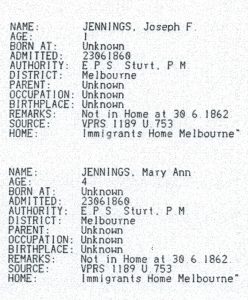
Index to Children in Victorian Institutions 1862
The Melbourne Immigrants home was established in 1853 to care for the influx of lone men and impoverished families who arrived in Melbourne during the 1850s gold rush.
Funded almost entirely by benefactors, the society expanded over the decades to provide assistance not only to immigrants but to all people who found themselves homeless, ill or destitute.
Both Mary Ann, aged 5, and Joseph, aged 2 died in care in 1861.
Unfortunately the next time we hear about Asenath is when she is giving birth to yet another illegitimate child in 1863.
Her daughter Asenath Clara Jennings was born on 28 August 1863 in the Melbourne Lying In Hospital in North Melbourne to parents Asenath Jennings and George Cranston Robson (1843-1894). (Her father George has been confirmed by DNA research).
Asenath (junior) was baptised on 10 August 1868, aged 4, at St Lukes, Yea, Victoria. The baptism register states she is the illegitimate daughter of George Robson, labourer of Upper Plenty and Asenath Hall Jennings.
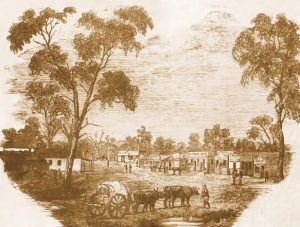
Grant Street Alexandra 1867
Sometime later Asenath moved to the Victorian town of Alexandra and she appears in the local newspaper in July 1868.
The town was settled in the late 1860s, with a Post Office opening on 15 March 1867.
The town was originally known as Redgate, or Red Gate Diggings. It was named after a man Mr Alexander who discovered gold in the area in 1866.
Asenath is appearing in the local Alexander police court, bringing about charges of assault against a Mr Warwick. (Asenath Jennings vs Warwick).
The newspaper stated “a charge of assault was brought by the plaintiff, a young woman who was deaf and dumb”. It appears she was coming out of a store with plates in her hand and ran into the defendant, who alleges he just tried to ward off the collision with his arms. This was done with such vigour it damaged the eye of the plaintiff. The defendant Mr Warwick was charged 1 pound, 5 shillings in costs. The evidence of the plaintiff, Miss Jennings, was taken in writing.
A few years later poor Asenath is back in the court again, although this time as a witness. She is now aged 34. She stated she was working as a servant in Smith’s Hotel in Alexandra on 3 December 1869. She appeared in a case John Smith vs Helen Clarke.
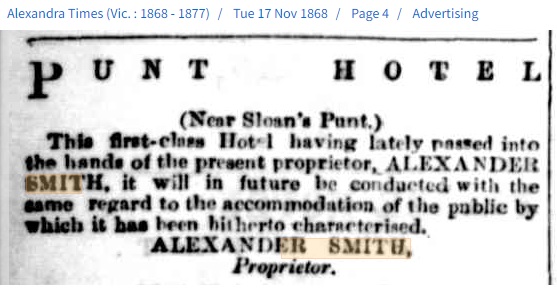
Helen was accused of stealing a gold brooch, spoons and a shawl from the publican John Smith. He stated he put them away in a box, and when he missed them, found them in Helen Clarke’s possession. Mind you, he said he remembered he missed them when he came home after two days in gaol (the lock up)! Several other people spoke in defence of Helen including a resident of the hotel and a housekeeper.
Asenath Jennings, a deaf and dumb woman was sworn in and stated that she was a servant at Smith’s and helped Mr Smith pack the boxes. She was called “the dummy” several times by Smith instead of using her name. At the end of the testimony the judge summed up by saying it was one of the grossest attempts to ruin a poor girls character that had ever come under his notice. The Bench unanimously dismissed the case.
Asenath was in more trouble, when she gave birth to her fourth illegimate child on 5 July 1870 in Alexandra. She registered the birth as Mary Jane Jennings. No father’s details are given, it just lists Asenath Jennings, aged 35, born Penzance, England as the mother and informant.
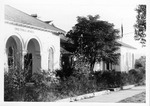
Alexandra Court House Webster St
On 15 February 1873 she is still in desperate circumstances. She appeared in the Alexandra Police Court, and it was stated that the plaintiff who is deaf and dumb, was there to sue Mr Miller for maintenance of an illegitimate child – Mary Miller.
She states that he had been paying 10 shillings a week for the past 18 months, but during the past nine months had paid nothing. Letters were produced in the defendants hand writing stating his inability to send money as he was out of employment. An order for 30 shillings a month was made, in default distress.
Her daughter Mary Jane, a servant girl, was married at the age of 16 to 22 year old bootmaker Phillip Henry Ohlson (1863-1935) on 21 December 1885 in Fitzroy. The couple had eight children. On her marriage certificate she states her mothers name as Asenath Wilson Jennings and her father (which is her step father) as William Dixon Wilson. Her stepfather William is a witness to the marriage. Their first son Frederick is born in October 1886 in Collingwood.
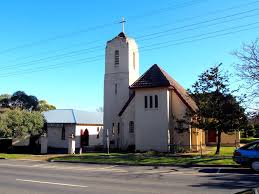
St Johns Anglican Church Alexandra
Finally on 9 July 1877, when she is 42, Asenath gets married! She marries widower William Dixon Wilson at the Church of England church in Alexandra.
Asenath states she is a spinster from Penzance, Cornwall aged 42, from Alexandra, and her parents were Thomas Jennings, shoemaker and Sarah Pascoe.
William states he is a 37 year old labourer, a widower (his wife died in 1870) from Alexandra, and that he was born in Newcastle, England. His parents are Colin Wilson, a carpenter and Mary Anne Dixon.
William’s first wife Eliza Colbon (1855-1870) died in childbirth with their son William James Wilson, who also died at birth (or soon after). She was only 15, and died at Jamieson, Victoria on 27 April 1870.
Does this mean that Asenath will finally settle down and have a good life with William and her two surviving illegitimate children – Asenath and Mary Jane?
Sadly no. On 3 February 1889 William Wilson is charged on warrant with deserting his wife of 29 Bendigo Street, Collingwood.

Victoria Police Gazette 1889
Back in court for the umpteenth time, Asenath is now suing her husband for maintenance in February 1889.
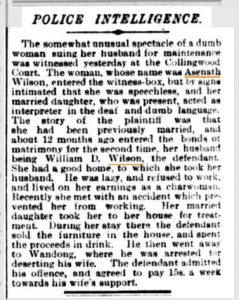
The Argus Newspaper, 16 February 1889
She brought along her married daughter Asenath to act as an interpreter using sign language.
She states she had entered the bonds of matrimony for a second time, to William, but he was lazy and refused to work, and she lived on her earnings as a cleaner.
She was now living with Asenath at her home in Collingwood. During her stay William had sold all her furniture and spent it on drink.
He was arrested in Wandong, Victoria for desertion and agreed to pay 15 shillings a week for her support.
The couple appear to have reconciled and by 1895 are living at Reedy Creek in Victoria.
Gold was discovered at Reedy Creek in 1857. Within two years reef mining began, and continued until the 1870s. The estimated mining population in 1859 was 3300 persons.
In 1903 Reedy Creek was described in The Australian Handbook –

Reedy Creek Victoria 1903 Australian Handbook
William appears in the Court of Petty Sessions at Broadford on two charges in February 1895. He assaulted Charles Rice, and behaved in an insulting manner in a public place towards Fanny Rice at Reedy Creek on 12 January. The charges were ‘settled’.
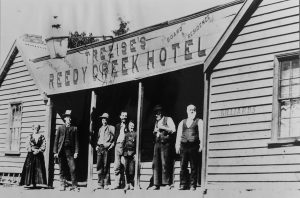
Reedy Creek Hotel Victoria
Asenath appears on the Victorian electoral roll in 1903-1912 living at Reedy Creek, Victoria (about 10 kms south east of Broadford). William is recorded with her, giving his occupation as a wood splitter.
Asenath’s husband Billy Wilson was a bit of a local character, immortalised in a poem written about him the newspaper the Broadford Courier on 26 August 1904 in the Poetry Section. This poem and other references found to her in the history of Broadford refer to Billy’s wife Asenath as ‘deaf and dumb’ but despite her disability she was able to write clearly and legibly on a small slate she carried around with her. The writer wonders how she learned to read and write, given her husband couldn’t. (Back in the Bristol Deaf and Dumb Institute in 1847 we now know).
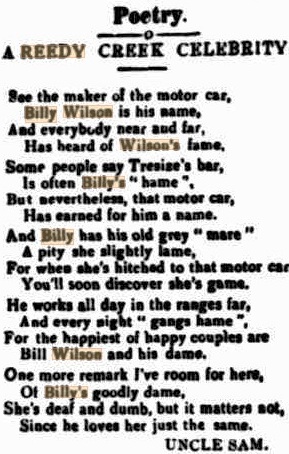
The book Broadford, a Regional History by B J Fletcher mentions the couple on three pages, with poor Asenath always been referred to as ‘Billy’s wife dummy’.
Billy is described as a bullock driver and a photo appears of him with his dray in the book. The couple fell on hard times in the tiny mining community and its said were often hungry, but would help anyone they could, often fetching the doctor in his dray if needed.
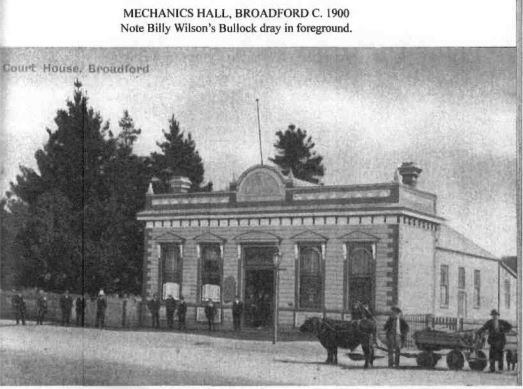
Asenath died at her home in Reedy Creek, on 2 August 1912 aged 77 years. Her death certificate states she died of heart failure and the informant was her husband William who was with her when she died.
I visited Reedy Creek (May 2020) and was fascinated to find a tiny little town in very hilly, rough country, miles from anywhere. Click on the pics to enlarge them.
Asenath is buried at the Broadford Cemetery (with no headstone), and surprisingly William states she has only one daughter – Mary Jane Wilson. It is a lovely historic, beautifully well kept cemetery that I also visited in May 2020.
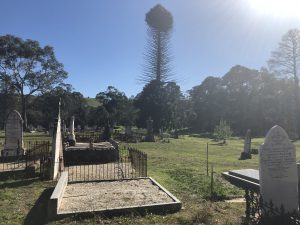
Broadford Cemetery. Asenath’s grave is in the green empty area.
The last of the deep reef mines closed in 1910. By the 1930s Reedy Creek had only the post office and school (which were closed in the 1960s), so I guess William needed to move somewhere where there was work.
I found him living back in Jamieson (where his first wife and baby son died) from 1914 to 1922, living in Darlingford, working as a miner. He was living with John Wilson, miner.
William lived until 1923, and he died in Beechworth, Victoria (no headstone).
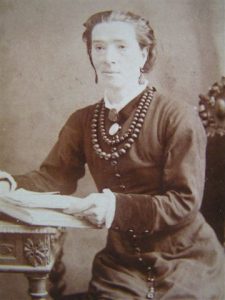
Her daughter – Asenath Clara Hutton nee Jennings / Robson
Asenath had an extremely tough life, being born deaf, sent away to boarding school at a young age, far from home, losing her mother when she was 14, immigrating to a strange country when she was 19, a difficult relationship with her brother, working as a servant and char woman most of her life, and having at least four illegitimate children, with four different fathers.
Only two of her children Asenath Clara (1863-1927), who is my 3 x great grandmother and her sister Mary Jane Jennings (1870-1953) survived to adulthood.
Her only marriage left her deserted, and destitute, but after reuniting with her husband William, I hope she spent the last few years of her difficult life in peace at Reedy Creek.

